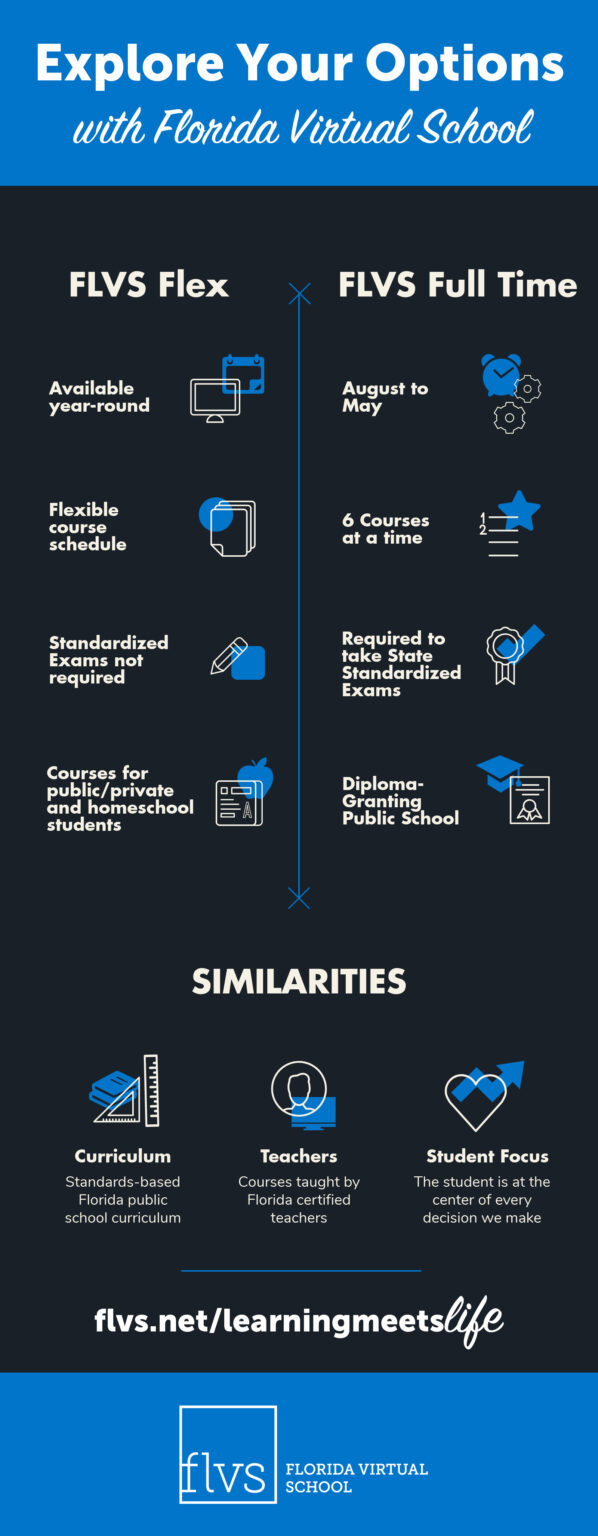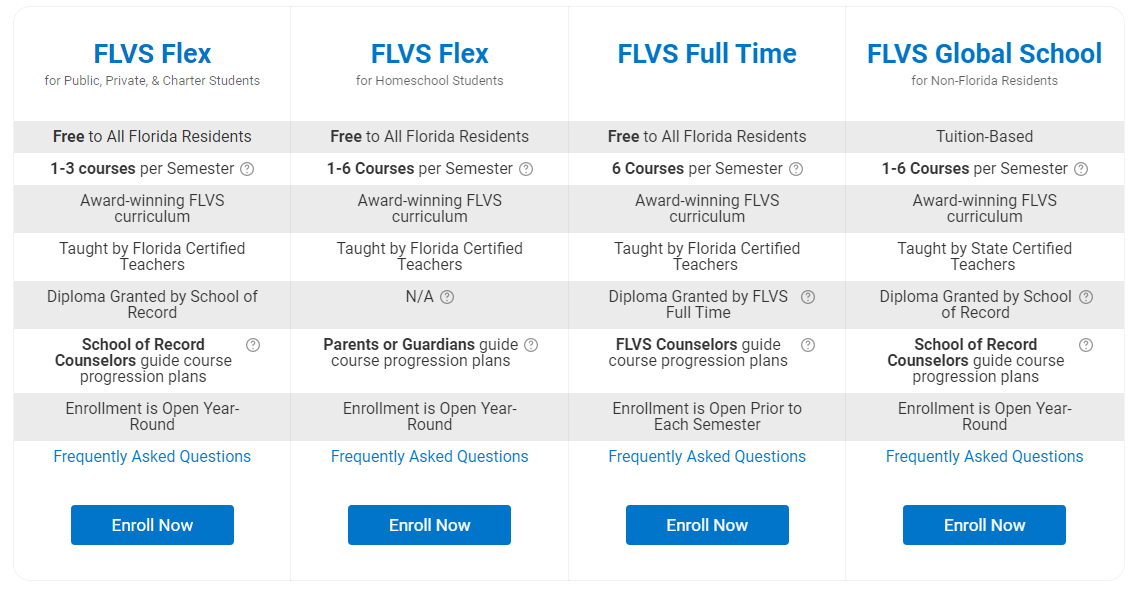TAMPA, Fla. — As many parents navigate choices for the 2020-2021 school year, things are different and hard due to the coronavirus pandemic.
One option parents may not have heard of is Florida Virtual School. The program has been around for 22 years and serves grades K-12.
We did a virtual interview with the Senior Director of Instruction Jason Schultz and he explained how the program works.
What is FLVS?
Schultz: We offer more than 190 free courses to students in grades K-12 in FLVS Flex and Full-time schools.
What are the main differences between FLVS Flex and FLVS Full-Time?
Schultz: With the full-time program, FLVS is the actual school and record for your child. So you have to register just like you would for any other Florida Public School. Students will be taking all core classes, specials and electives. The school operates on a 180-day calendar just like brick and mortar schools starting in August and ending in June. They have morning announcements, set class times where students work together with the teacher, clubs and activities and then they're able to work on their own through the content but of course reaching out to the teacher when needed.
With the Flex program, it's a little bit more flexible. You can choose whenever you want to start and complete courses. Our enrollment is open year-round and you can choose to work faster or slower, as needed. You also don't have to complete all six courses a the same time, which I think is part of the appeal for some families. With Flex students, K-12 grade they can take one course or multiple courses to supplement their education. One key difference to note if you're going the Flex route and taking all classes through Flex, you'll need to register your child as a home education student with your current school district.
So, with Flex you have the option to start school whenever you want?
Schultz: You really can. All of our classes are online and you're able to access them 24/7. It does give students and families some options that work around their schedules. The full-time option is a little more structured with what the day looks like and when students are attending online classes.
Is there a parent or child that FLVS typically works for?
Schultz: The full-time program is really ideal for someone who wants that full school experience, the morning announcements, the full wrap-around services. With Flex, it tends to be more appealing for families to decide when they start and what pace they work at. The full-time program starts in August and the first semester ends right around the Winter break. So if you're looking for a traditional option, that's great. With Flex, it appeals to families who want to take a couple of courses at a time and work at a more accelerated rate and take additional courses or maybe a little slower pace to really help students master the course and I think that's the key.
What if a parent chose brick and mortar or county virtual and decides halfway through the semester it's not working. Is FLVS still an option?
Schultz: You can. Our full-time application ends on 7/31. But, for families looking later in the school year, our Flex program is open year-around.

Are you seeing an increase in demand for teachers right now?
Schultz: We are. This time of year is our busiest time of year. We have seen an increase in the number of registrations so we are hiring additional teachers right now to make sure we have the staff on board to serve the students coming our way. All of our teachers are state-certified.
What does Kindergarten look like digitally?
Schultz: It looks different than a 6-12 secondary class. Elementary is very hands-on, a lot of games, a lot of activities and really breaking up the time to make it fun and engaging, especially when it comes to Kindergarten students. But we're still covering the same standards. A lot of it comes down to communication and the relationship with the teacher. We invest a lot of time to make sure we know our students, families and I think that helps to break down the barriers and allow students to communicate with their teacher online because that is different than a face-to-face environment. A lot of times, our teachers will use Zoom or an online platform so they can see students. It doesn't look a lot different than what you would see in a classroom because the interactions are still the same. Most of the elementary school teachers have come from a brick and mortar setting and they're applying the same strategies. There's a lot of activities to keep kids engaged in the content. There is frequent communication with the parents and talking through the content to make sure they understand it. You can click here for more details on digital learning for Elementary students.
Do your parents need to be super involved?
Schultz: Middle and High School students can typically do much of this on their own with parents there to help support and make sure they are making forward progress. With Elementary school, it's a little more hands-on for the parents. The content is all there, the instruction is all there but we definitely need that partnership with a parent to make sure they are helping them through it. Technology is new for a lot of these kids, too.
If you want more information on FLVS, check out this blog post.
RECOMMENDED:


